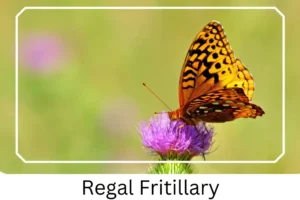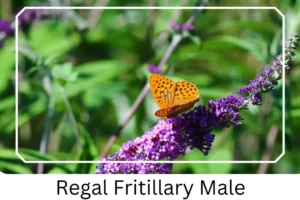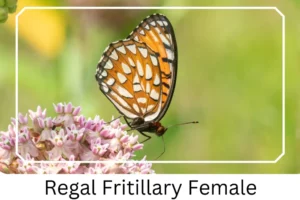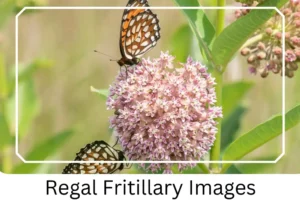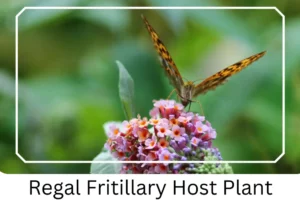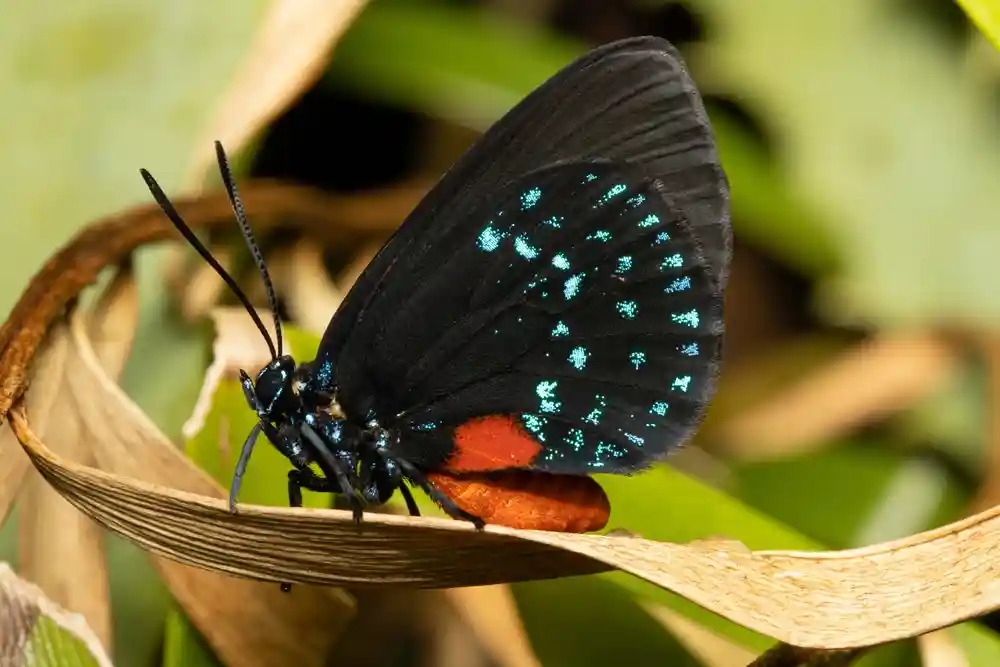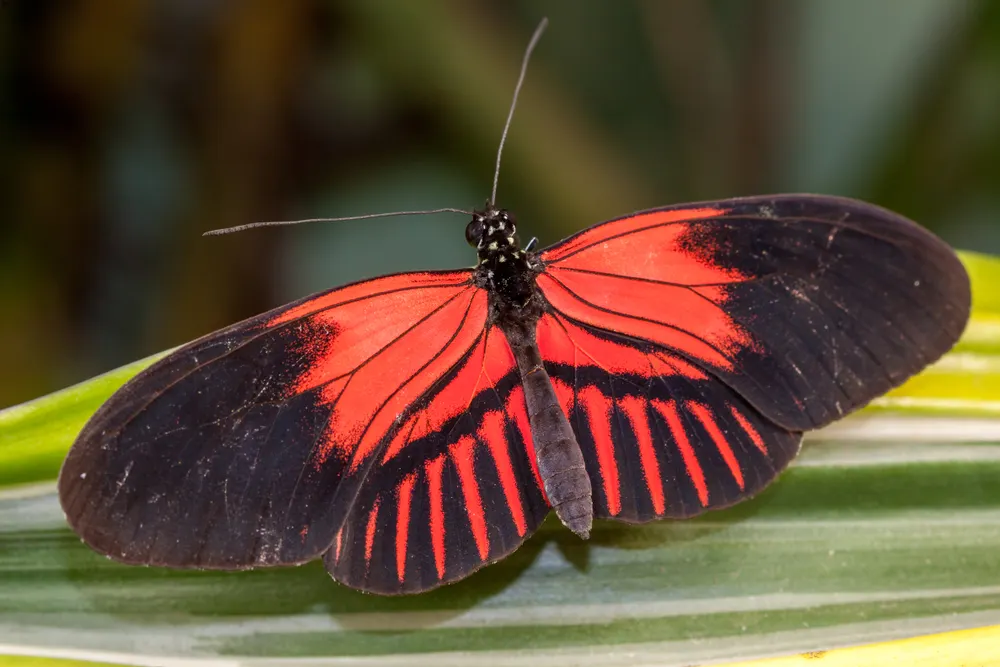Regal Fritillary (Speyeria idalia)
The Regal Fritillary, a majestic species of butterfly, boasts a vibrant display of colors and patterns, making it a spectacle of nature’s artistry. This butterfly species, primarily found in select regions of the United States, is admired for its striking reddish-orange and black hues that illuminate the summer skies. However, their beauty belies the concerning reality of a declining population, prompting conservationists to classify them as ‘Vulnerable’ or ‘At Risk’ (category G3) according to NatureServe.
Scientific Classification
- Family: Nymphalidae
- Genus: Speyeria
- Scientific Name: Speyeria idalia
Overview
Exploring the world of the Regal Fritillary butterfly shows us a beautiful and tough creature. These butterflies navigate their habitat within the east-central United States, favoring the lush expanses of tall-grass prairies and wet meadows. Despite their adaptability, the species faces challenges from habitat destruction and environmental changes, highlighting the importance of conservation efforts. This comprehensive guide explores the fascinating aspects of the Regal Fritillary’s existence, from its early stages as a caterpillar to the glory of its adult form, shedding light on its behaviors, dietary preferences, and the ecological significance it holds.
Description and Identification
Caterpillar
The Regal Fritillary caterpillar is a sight to behold, with its velvety black skin adorned with yellowish-orange blotches or, alternatively, a yellow to yellowish-orange body with black markings. Its body is equipped with six rows of black, bristled spines, providing a form of defense. The caterpillar’s head is a striking black, highlighted with orange hues, signaling its connection to the vibrant adult it will become.
Pupa
Transitioning into the pupa stage, the Regal Fritillary chrysalis adopts a light mottled brown color, subtly tinged with pink. This phase is marked by small black spots across the wings and thorax, complemented by transverse yellow bands on the abdomen and short dorsal cones, hinting at the transformation underway.
Adult Butterfly
Sexual Dimorphism: The adult Regal Fritillary is a testament to nature’s palette, with males and females exhibiting slight Sexual Dimorphism.
Color and Appearance: When the wings are spread, the dorsal side of the forewings display a bright reddish orange coloration with black markings, whereas the hindwings show a black base color with rows of postmedian white spots. In the male regal fritillaries, the submarginal row of spots is in orange, and in the female, it is white. When the wings are closed, the ventral side of the forewings shows a bright orange color that gradually turns dark towards the edges, while the hind wings are black with white leaf-like spots.
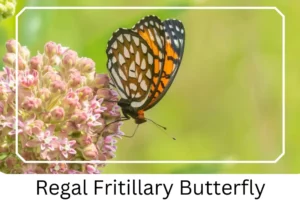
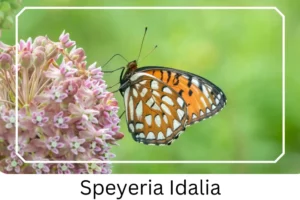 Average wingspan: 68–105 mm (2.7–4.1 in)
Average wingspan: 68–105 mm (2.7–4.1 in)
Flight pattern: Slow yet erratic, a dance in the air that captivates onlookers.
Eggs
The beginning of life for a Regal Fritillary is encapsulated in cream-colored, conical eggs adorned with irregular ridges, a marvel of nature’s design.
Quick Facts | |
| Distribution | Limited to the east-central regions of the United States. |
| Habitat | Prefers tall-grass prairies, wet fields, damp meadows, marshes, and mountain pastures. |
| Lifespan of Adults | Ranges from 14 to 60 days, influenced by climate conditions. |
| Host Plants | Favors plants from the violet species, including the bird’s foot violet. |
| Adult Diet | Primarily nectar from flowers such as milkweeds, thistles, red clover, and mountain mint. |
How to Identify Regal Fritillary?
Identifying a Regal Fritillary is a delightful challenge for nature enthusiasts. Look for the butterfly’s large size and the distinct reddish-orange and black coloration. In flight, their erratic pattern is noticeable, as is the unique arrangement of white spots against a black background on the hind wings when perched. The male’s orange and the female’s white submarginal spots are key identifiers. Observing these butterflies in their natural habitats, especially during summer, can increase chances of spotting them. Learning to recognize their preferred host plants and nectar sources can also guide enthusiasts to areas where these butterflies are likely to be found.
Did You Know?
- In addition to the circular flying pattern males exhibit while pursuing females, Regal Fritillaries have a unique practice of ‘hilltopping,’ where males fly to the highest point in their habitat to watch for females and defend their territory.
- Despite their vibrant appearance, Regal Fritillaries are excellent at camouflage, blending seamlessly with their natural environment when their wings are closed, showcasing the intricacy of their survival strategies.
Conclusion
The Regal Fritillary encapsulates the fragile beauty of nature’s creations, reminding us of the delicate balance that sustains biodiversity. As we delve deeper into their world, understanding their life cycle, habitat, and behaviors, it becomes evident that these butterflies are not just aesthetically pleasing but vital components of their ecosystems.

